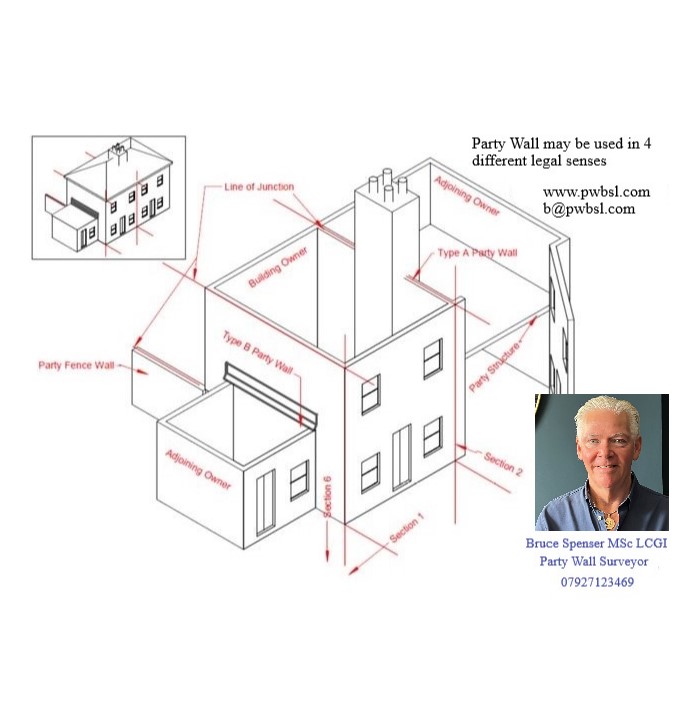Party Wall Surveyor Negligence
Negligence is failing to meet the degree of prudence and caution required of an individual who is under a duty of care (the obvious comparable benchmark is a surveyor registered within the Faculty of Architecture and Surveying of the CIOB or other Chartered Institutes)
NEGLIGENCE – EVOLVING CHRONOLOGY
HEDLEY BYRNE v HELLER & PARTNERS (1964)
In tort law, a duty of care is a legal obligation owed by for example a professional to a client similar to a Doctor and patient. Donaghue (or MAlister v Stevenson 1932) founded this modern tort of negligence.
This can be encapsulated utilising the principals establishes in Hedley Byrne v. Heller & Partners Ltd. [1963] 2 All E.R. 575:
- That the misrepresentor owes a duty to take reasonable care in when making representation within a special relationship
- That the misrepresentor is in breach of this duty
- Damage results from this breach
Hedley Byrnes bankers (Heller) phoned another bank and enquired re the financial state and creditworthyness of a company (Easipower) Hedly B was about to enter into business with. The bank vouched for them but stated, : “for your private use and without responsibility on the part of the bank and its officials.” Hedley Burns commenced business but the company went bankrupt. Hedley sued Heller for negligence.
The court found that the relationship between the parties was “sufficiently proximate” as to create a duty of care. It was reasonable for them to have known that the information that they had given would likely have been relied upon for entering into a contract of some sort. This would give rise, the court said, to a “special relationship”, in which the defendant would have to take sufficient care in giving advice to avoid negligence liability. However, on the facts, the disclaimer was found to be sufficient enough to discharge any duty created by Heller’s actions. There were no orders for damages.
Mr Babb was employed as a surveyor by a firm. He carried out a survey and valuation on instruction from a building society (Bradford and B). He negligently failed to advise/see cracks which were a result of foundation failure. He sought to exclude personal liability in the way he filled in B&Bs required forms.
The plaintiff, which was a Ms Merrett purchased the house on the strength of the report and when the cracks appeared decided to seek damages.
By this time Mr Babb’s employer had gone out of business and their bankruptcy trustee had cancelled their professional indemnity.
Amongst a number of questions the Courts had to decide in this case was did Mr Babb owe Ms Merrett a duty of care, if so had he breached that duty of care and did the plaintiff suffer damage.
To cut a long story short, before I resume the longer story, it was found that Babb did owe a duty of care and was liable – and this poor chap had no insurance.
The judgement of Merrett v Babb is an interesting read as it an insight into the chronology of the evolving tort of neglect – this evolved from the tort of trespass during the industrial revolution when there was a marked move from the land to the factory. There appears to have been a confusing time following Anns v Merton BC which has been seemingly rectified by Caparo v Dickman
|
1856 |
Blyth v Birmingham wworks |
Negligence is the failure to do what a reasonable person would have done (or would not have done) |
|
1883 |
Heaven v Pender |
Duty of care to employee (provide adequate scaffolding) |
|
1932 |
Donoghue v Stevenson (L Aitken) Proximity = neighbour Foreseeability = contemplation |
The rule that you are to love your neighbour becomes in law, you must not injure your neighbour: and the lawyers question, Who is my neighbour? receives a restricted reply. You must take reasonable care to avoid acts or omissions which you can reasonably foresee would be likely to injure your neighbour. Who then is my neighbour? The answer seems to be – persons who are so directly affected by my act that I ought reasonably to have them in contemplation as being affected when I am directing my mind to the acts or omissions which are called in question |
|
1943 |
Bourhill v Young |
Proximity |
|
1945 |
Law Reform |
Contributory negligence |
|
1961 |
Wagon Mound |
Foreseeability |
|
1963 |
Hedley Byrne v Heller |
Principle of economic loss, liability for negligent statements and acts established · Special skill · Reliance on advice · Knowledge of transaction Make sure you have full professional indemnity before you open your mouth!!!!!! |
|
1970 |
Home Office v Dorset Yacht |
Forseeability and proximity |
|
1978 |
Anns v Merton BC |
Forseeability and proximity unless legal or policy reason existed to do away with Doghue Stevenson |
|
1983 |
Junior Books v Veitchi |
Economic loss is allowed – No contract and pursued by way of tort |
|
1988 |
D&F Estates v Church Coms |
Junior Books v Veitchi is unique?? |
|
1985 – 1989 |
Cases various |
Anns v Merton questioned and attacked |
|
1990 |
Caparo v Dickman Incremental approach of Brennan J |
Pure economic loss – · Foreseeable · Proximity – laid down · Just and reasonable |
|
2004 |
Lennon v Commissioner of police |
Duty of care extended to managers (in this case HR) who give advice – in a work situation. |
Cases quoted in Merret v Babb judgement:
Smith v. Eric S. Bush and Harris v. Wyre Forest District Council [1990]
Yianni v. Edwin Evans & Sons [1982] QB 438
Candler v. Crane, Christmas & Co [1951] 2 KB 164;
Anns v. Merton London Borough Council [1978] AC 728;
Hedley Byrne & Co v. Heller & Partners [1964] AC 465
Harris v. Wyre Forest District Council,
Housing and Local Government v. Sharp [1970] 2 QB 223
Curran v. Northern Ireland Co-ownership Housing Association (1986) 8 NIJB 1
Party Wall Surveyor serving Thanet and London
Third Surveyor serving England and Wales


